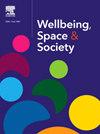Cumulative impact assessments highlight the linkages among intentions, behaviors, and benefits of home gardening in the post COVID-19 pandemic era
IF 2.2
Q2 GEOGRAPHY
引用次数: 0
Abstract
The COVID-19 pandemic has significantly heightened people’s awareness of their physical and mental well-being. Numerous studies have demonstrated the multifunctional benefits of home gardening for human health before and during the pandemic. However, little is known about the factors influencing individuals’ home gardening behaviors and whether there is a connection between home gardening during and after the COVID-19 pandemic. This study develops a cumulative impact model to assess the role of motivations and habits associated with home gardening in promoting public health during and after the pandemic. We employed PLS-SEM to examine public responses from a cross-sectional survey conducted in Vietnam. Additionally, PLS-MGA was used to compare group differences based on demographic characteristics. The findings indicate that health consciousness and the perceived benefits of home gardening during the pandemic positively influenced individuals’ intentions to continue gardening post-pandemic. These intentions positively impacted gardening behaviors during and after the pandemic. Similarly, the well-being benefits of gardening were strongly associated with gardening behaviors. Our study identified significant differences in gardening intentions and perceived benefits between urban and rural residents and between younger and older individuals. Moreover, we observed significant differences in the relationship between support solutions and gardening behaviors among these groups. However, no significant differences between males and females regarding home gardening participation were found. This study provides theoretical insights into how people engaged in home gardening at different pandemic stages. The findings inform policymakers in designing support programs that effectively promote home gardening by addressing distinct needs and motivations.
累积影响评估强调了后COVID-19大流行时代家庭园艺的意图、行为和效益之间的联系
2019冠状病毒病大流行大大提高了人们对身心健康的认识。许多研究表明,在大流行之前和期间,家庭园艺对人类健康具有多功能益处。然而,人们对影响个人家庭园艺行为的因素以及COVID-19大流行期间和之后家庭园艺之间是否存在联系知之甚少。本研究开发了一个累积影响模型,以评估与家庭园艺相关的动机和习惯在大流行期间和之后促进公共卫生方面的作用。我们使用PLS-SEM来检查在越南进行的横断面调查中的公众反应。此外,PLS-MGA用于比较基于人口统计学特征的组间差异。研究结果表明,大流行期间的健康意识和家庭园艺的感知益处对个人在大流行后继续园艺的意愿产生了积极影响。这些意图在大流行期间和之后对园艺行为产生了积极影响。同样,园艺对健康的好处与园艺行为密切相关。我们的研究发现了城市和农村居民以及年轻人和老年人在园艺意图和感知收益方面的显著差异。此外,我们观察到支持解决方案与园艺行为之间的关系在这些群体中存在显著差异。然而,男性和女性在参与家庭园艺方面没有显著差异。这项研究为人们在不同的流行病阶段如何从事家庭园艺提供了理论见解。研究结果为决策者提供了设计支持项目的信息,通过解决不同的需求和动机,有效地促进家庭园艺。
本文章由计算机程序翻译,如有差异,请以英文原文为准。
求助全文
约1分钟内获得全文
求助全文
来源期刊

Wellbeing Space and Society
Social Sciences-Social Sciences (miscellaneous)
CiteScore
2.70
自引率
0.00%
发文量
46
审稿时长
124 days
 求助内容:
求助内容: 应助结果提醒方式:
应助结果提醒方式:


